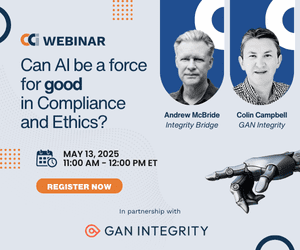The principal corporate governance campaigns of the past decade have reached a plateau in terms of both investor commitment and implementation. These governance issues (such as majority voting, de-classifying staggered boards, eliminating super-majority votes and executive compensation excesses) are not by any means going away. Indeed, there are concerted investor-led efforts to push favored corporate governance “best practices” down the corporate chain to mid-cap and small-cap companies. However, the activist community has clearly won the policy battles surrounding these governance principles, and their “sizzle” is dissipating.
Policy stasis does not become corporate governance activism, as its very name implies. Corporate governance activists will develop new “green fields” to plow; otherwise they risk becoming irrelevant. The question is not whether corporate governance activists will move on, but rather where they will go.
While there are a number of possible new foci, two stand out in particular:
- the ratio of CEO pay to the median pay of all company employees; and
- company sustainability, alternatively called ESG (environmental, social and governance) or CSR (corporate social responsibility), in terms of both company behavior and reporting to investors.
CEO Pay Ratio
Under the Dodd-Frank Act, CEO pay ratio will become a mandated disclosure for all public companies as soon as the SEC finishes its rule-making, widely expected in 2014 to take effect beginning with calendar year 2015. No matter how the eventual rule turns out (in terms of treatment of part-time, temporary and foreign employees and in terms of data collection and calculation), the reported ratio will be very high, even for CEOs whose compensation is relatively modest. Many observers believe the statutory requirement for pay ratio disclosure was a politically motivated Congressional mandate intended to create embarrassment and public pressure to reduce CEO pay. Whether or not this was its genesis, the disclosure will have that effect.
Populist (and political) sentiment against income disparity in the United States continues to rise. The public, the press and the political classes consistently demonstrate a lack of confidence in the integrity and fairness of corporate America, and there many signs of palpable anger at corporate America’s executive pay levels. These views are increasingly embraced by institutional investors of all stripes, even those who run on a for-profit model at which pay for senior executives is hardly modest. A number of legislative proposals have surfaced in Europe explicitly designed to cap CEO pay ratios, all at rates that would have profound effect if imported to the U.S., as some foreign-based investors would like. While this risk appears very remote, it is part and parcel of what seems to be widespread pushback against current senior executive pay levels throughout the Western economies.
These observations illustrate the potentially explosive nature of the mandatory pay ratio disclosure regime that will come permanently to the U.S. next year. Consequences almost certainly include union exploitation of the CEO’s pay ratio in confrontations with management on almost any issue. Moreover, unions and “socially conscious” institutional investors (not to mention individual shareholders ranging from the “gadfly” to a politically progressive owner of a few hundred shares) could easily launch a wave of shareholder proposals aimed at reducing a CEO’s pay ratio, either in the context of some form of labor dissatisfaction or simply as a matter of what they will label good corporate governance.
To compound the problem, it seems clear that the SEC rule will make comparability among companies extremely difficult. As proposed, the rule will allow great flexibility in permissible statistical methodologies for calculating the median pay at any given company. Moreover, the proposed rule does not permit adjusting median pay to take into account temporary, part-time or seasonal employment or differences in wage scales in different geographical areas inside or, worse, outside the U.S. Finally, the proposed rule does not deal with differences in business models, such as the use of independent contractors rather than employees to perform functionally equivalent tasks or the use of subcontractors rather than company-owned plants to produce sub-assemblies or finished products.
The bottom line is clear. Public companies need to plan for a 2015 implementation of CEO pay ratio disclosure sooner rather than later. In addition to determining the data collection and manipulation required simply for compliance with the new rule (a task that could easily take all or most of 2014), each public company should begin developing its plan for presenting the required ratio in the context of a narrative that puts the single data point (which is intended to provoke a strong negative reaction) into a more meaningful context that investors, the financial press and hopefully politicians can understand.
What does this mean in terms of concrete action? We believe every public U.S. company should:
- Establish a team to deal with the pay ratio disclosure and develop and hone the company’s explanatory narrative.
- Determine the informational requirements needed to support the company’s narrative because they may be as or more complicated than the generation of the median pay number itself.
- Assess the desirability of creating a meaningful peer group for purposes of the analysis, taking into account similarities and differences in businesses and business models.
- Develop the framework for the company’s peer group narrative, taking into account availability of information about proposed peer companies.
- Adjust planning as the SEC rule-making process continues in order to stay abreast of changes in the final rule.
Sustainability
Sustainability, like the Tower of Babel, has many voices. According to The Conference Board, sustainability as a concept encompasses 72 separate environmental, social and governance practices. A plethora of competing measurement standards for company sustainability performance also exists, such as the GRI Framework for Reporting, CSRHub Ratings, Brandlogic’s Sustainability IQ Matrix, Bloomberg’s ESG Disclosure Scores, Newsweek’s Greenest Companies, CR 100 Best Corporate Citizens and the EIRIS Global Sustainability Ratings. The multitude of issues under the sustainability umbrella coupled with different – and often competing – reporting metrics is both good news and bad news.
It is good news in the sense that a company can shape its sustainability practices and reporting to its business model and its aspirations. Unlike most corporate governance best practices, there is no single “right” sustainability model (or, as some would have it, straitjacket). But the very imprecision and amorphous nature of the concept is also bad news. Unless a corporation is truly comprehensive in its definition of sustainability and its sustainability achievements—a very difficult goal, if not impossible—critics may be able to find fault by focusing on those particular aspects of sustainability ignored by the company or at which it performs relatively poorly.
Moreover, it is increasingly clear that sustainability is of growing importance to investors, particularly those who pride themselves on their corporate governance activism. This investor group notably includes state and local pension funds and union pension funds, which are the most active proponents of use of shareholder resolutions to change corporate conduct. In fact, the largest single category of shareholder proposals in recent years has been those dealing with sustainability issues. Corporate governance advocates are buttressed in their increasing attention to sustainability and its measurement by a growing number of academic studies purporting to demonstrate a high degree of correlation between good sustainability practices and higher share valuations. There is also academic evidence that sustainability efforts can enhance reputation, increase employee retention and increase resilience in times of crisis. Finally, there can be little doubt that the other side of the sustainability coin—such as worker exploitation in a company’s supply chain, poor environmental practices or exposure of confidential customer information—can cause significant reputational loss and customer antipathy.
While many companies issue sustainability reports on an annual basis, many do not. Companies in the latter category should re-examine this policy and, if practicable, begin reporting on their sustainability record every year in conjunction with the issuance of their annual report to shareholders. However, it is critical to bear in mind that the content of the report is more important that its existence. Providing an annual report on sustainability will have a positive “check the box” compliance effect. But unless the report focuses on the company’s most salient sustainability challenges, it can all too easily become the source of investor criticism and wind up doing more harm than good.
Accordingly, we believe that a company should:
- Regularly identify its potential sustainability trouble spots and develop programs targeted to improving its sustainability profile.
- Monitor sustainability initiatives, both domestic and international, to be sure it is up to date on the sustainability issues du jour and does not get blindsided by an attack based on the latest and greatest sustainability issue.
- Survey the different sustainability indexes and measurement services and positively work to improve its ratings, at least in the more prominent ones.
- Undertake a sustainability communications program that might include, in addition to an annual sustainability report:
- a company Web page targeted to investors focusing on its sustainability programs;
- separate communications streams (and delivery protocols) devoted to employees, customers and local communities to deal with sustainability issues of most relevance to each constituency;
- creation of a public affairs function to deal with sustainability issues;
- development of proactive responses to address sustainability vulnerabilities, as well as standby statements for investor or media inquiries; and
- creation of a crisis response team and protocol against the possible occurrence of a sustainability “crisis.”
Conclusion
The writing is on the wall for anyone to see. Governance activists have already begun to pivot from their more traditional concerns to new horizons—first and foremost CEO pay ratio and sustainability. Public companies should not wait for shareholder resolutions on these topics. Rather, they should proactively prepare to deal with these issues on the merits and communicate their stories to all of their constituencies on a regular basis and effectively.



 Chuck Nathan advises global clients on M&A, financial transactions, governance, Board issues and shareholder matters at RLM Finsbury, a leading global strategic communications firm.
Chuck Nathan advises global clients on M&A, financial transactions, governance, Board issues and shareholder matters at RLM Finsbury, a leading global strategic communications firm.








